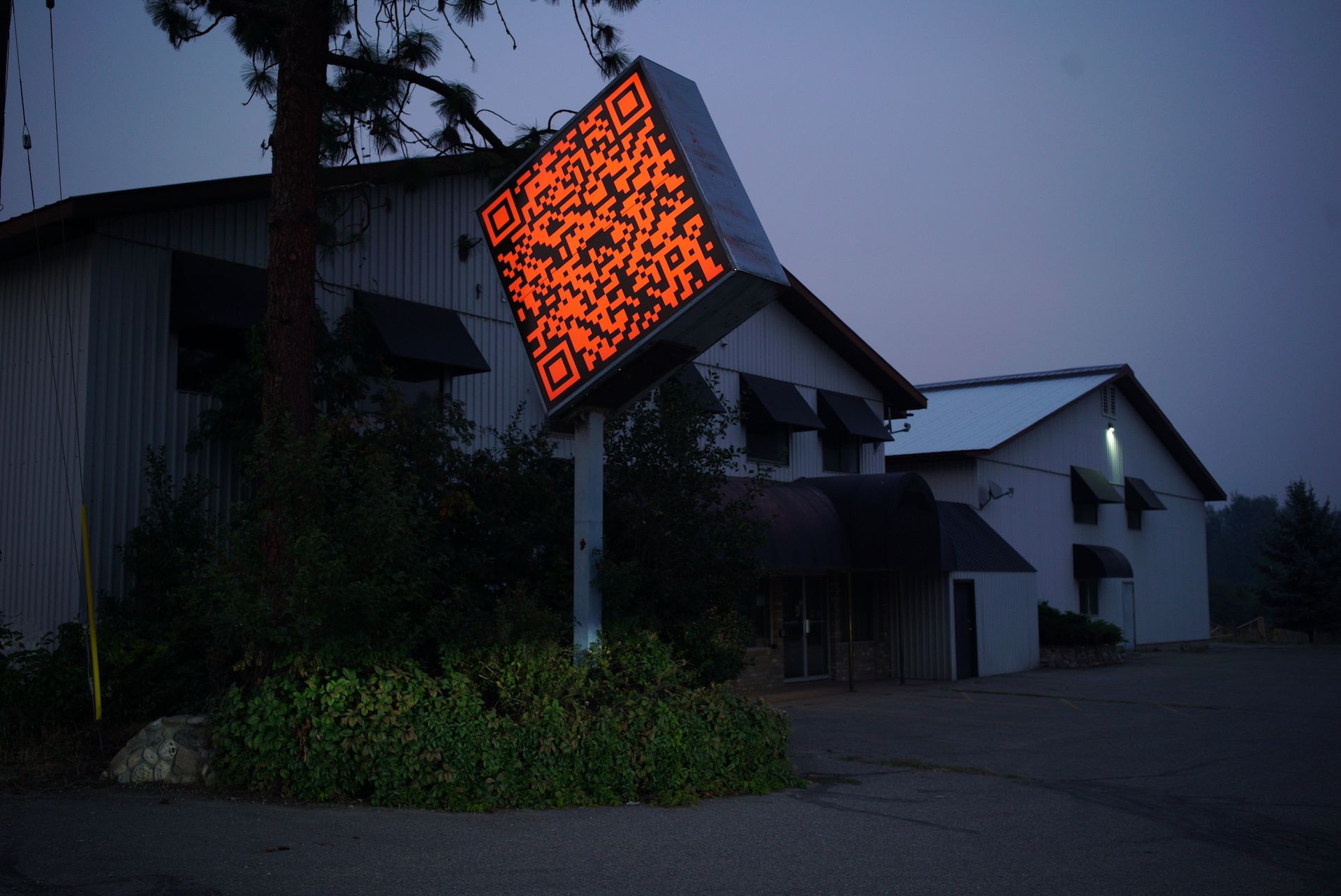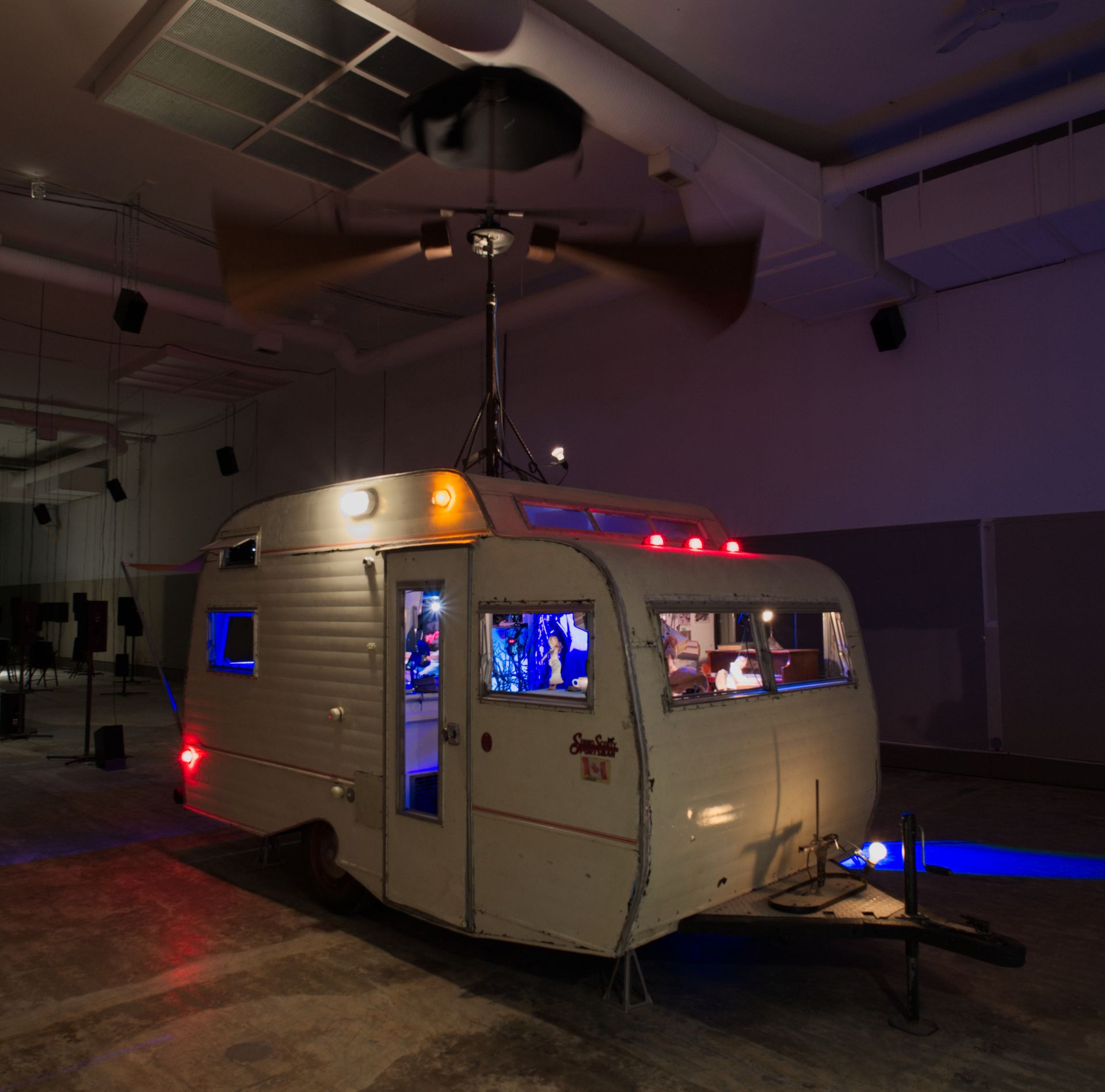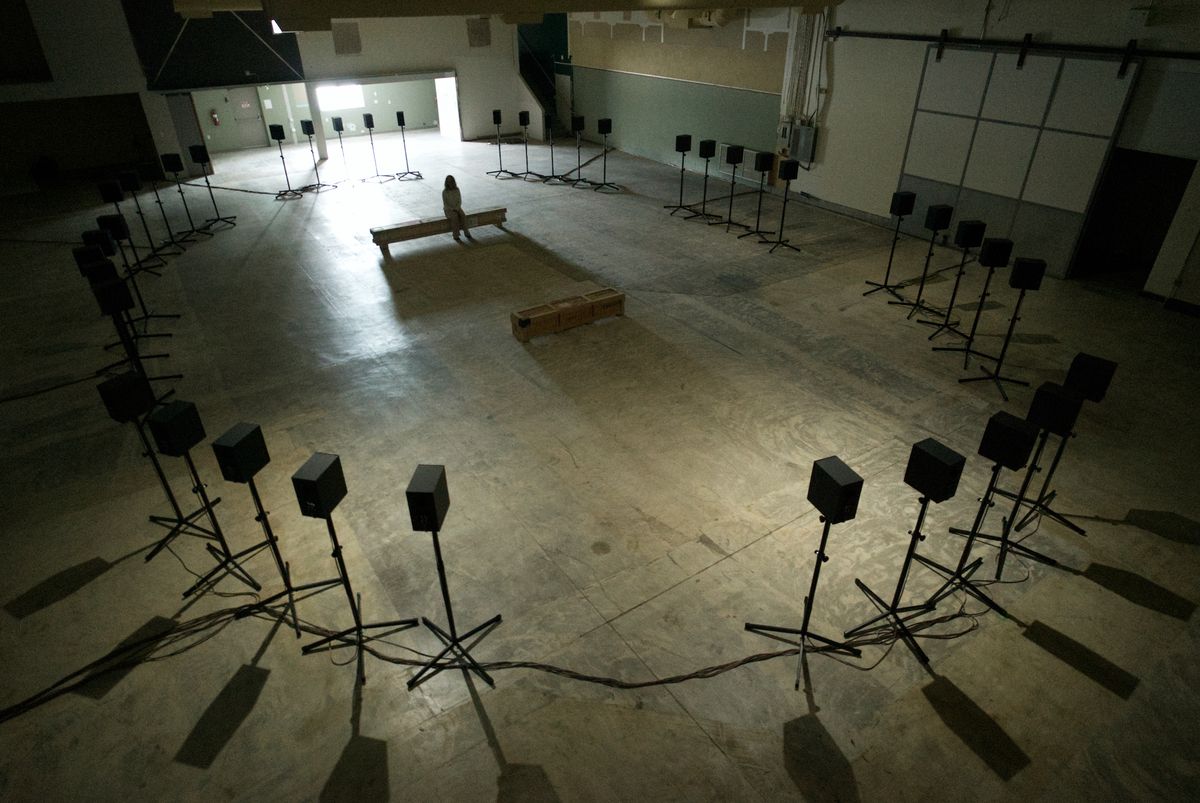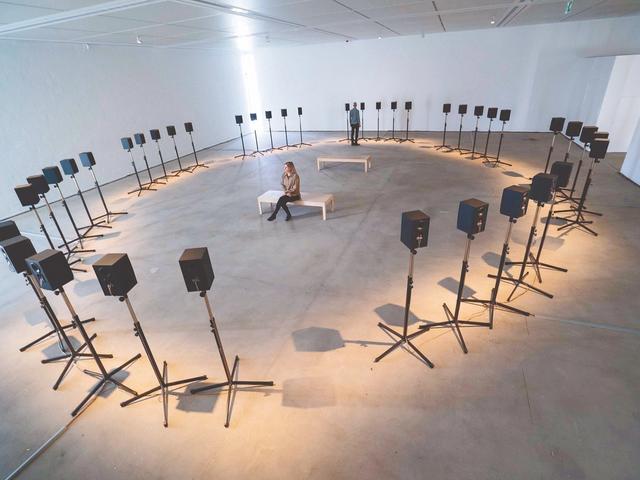The wife-and-husband artist duo Janet Cardiff and George Bures Miller, who represented Canada at the 2001 Venice Biennale, have created a permanent home for their celebrated immersive multimedia installations. The pair’s work—which has been celebrated in Venice, Kassel, New York, Madrid and other cultural destinations—is now being showcased in a converted furniture showroom in the rural farming community of Enderby, British Columbia, population 3,000.
The couple moved to the Northern Okanagan area in 2006 from Berlin and had been looking for years for a suitable venue, Cardiff tells The Art Newspaper. “We’ve always wanted a permanent home to showcase our largest installations and when we discovered this huge space so close to where we live, we knew it was perfect.”
Boasting 20ft-high ceilings and over 9,000 sq. ft of space, the building had great bones, but needed substantial renovations. After five years of work, the Cardiff Miller Art Warehouse opened on 29 July to a crowd of 300. Those who attended were a mix of locals from both Enderby and the adjacent Splatsin reserve, as well as some dedicated art fans—including a gallerist who drove five hours from Vancouver.

The exterior of the Cardiff Miller Art Warehouse in Enderby, British Columbia, Canada Courtesy the artists
“Rural roots are close to both our hearts,” says Cardiff, noting that both she and Miller grew up in small towns in Canada. They relish the “freedom to think and walk” provided by their rural lifestyle, as well as the ample studio and living space it allows. They still travel extensively throughout Europe and North America, with an exhibition on now at the Museum Tinguely in Basel, Switzerland, and an upcoming show at Fraenkel Gallery in San Francisco in January. “But coming home now feels like a kind of vacation,” says Cardiff, who relishes the clean air and open spaces, reminiscent of her upbringing on an Ontario farm.
She sees the new space as part of “a movement toward community-based projects” happening internationally. “We won’t get the same audience as in London or New York,” she says,” but it’s all about being part of your community—and not disregarding that community.”
Cardiff says there are already many existing cultural organisations and initiatives in the area that augment their new venture, including Caravan Farm Theatre in nearby Salmon Arm, as well as public galleries in Vernon and Kelowna. A former professor of fine arts, she says the educational aspect of the project is paramount and to that end she is in discussion with nearby universities in Kamloops and Kelowna about student tours. There is also a new “rail trail” in development along the same river that runs alongside their new warehouse that will attract more visitors.
Exhibitions will be mainly in the summer months through October, before the cold and snowy winters set in—although Cardiff says they may open for a week over the Christmas holidays. The initial exhibition consists of four installations by the duo, one of which, The Marionette Maker (2014), is having its Canadian debut. The cinematic installation in a vintage caravan, featuring life-like silicone models of the artists, travels between dream and nightmare, playful romp and horror film as it explores the creative process in a work that reads like a Victorian diorama on acid.

Janet Cardiff and George Bures Miller's The Marionette Maker (2014) on view at the Cardiff Miller Art Warehouse Courtesy the artists
Other works on view include The Poetry Machine (2017), an audio collage of recordings of Leonard Cohen reading poems from his Book of Longing (2006) that allows viewers to access excerpts randomly by touching the keys of a vintage organ. The inaugural display also features the duo’s famous Forty Part Motet (2001), a re-working of Thomas Tallis’s Spem In Alium, a 16th-century, 40-part harmony choral composition reimagined as a virtual choir installation (recorded with the Salisbury choir in England) replayed using one separate audio speaker for each of the 40 voices.
“We did this because we like looking at our own works,” Cardiff says, adding that re-experiencing some of their work has offered some interesting epiphanies.
Before the warehouse opened, she says, The Marionette Maker was her favourite work. But it has been surperseded by Murder of Crows (2008), a 98-channel audio installation that weaves together spoken dream narratives and the haunting caws of crows to create a dense audio experience.
Murder of Crows is rarely shown as it requires a large space, and Cardiff says she last saw it in Madrid in the spring of 2022. Experiencing it in the new warehouse, “I thought to myself, ‘I don’t know how we did it. The sound design was so complex.” Revisiting the piece, for which the couple first began making recordings in Kathmandu in 2007, made her realise the ephemeral quality of their work.
She adds, “We could never make something like this again.”



